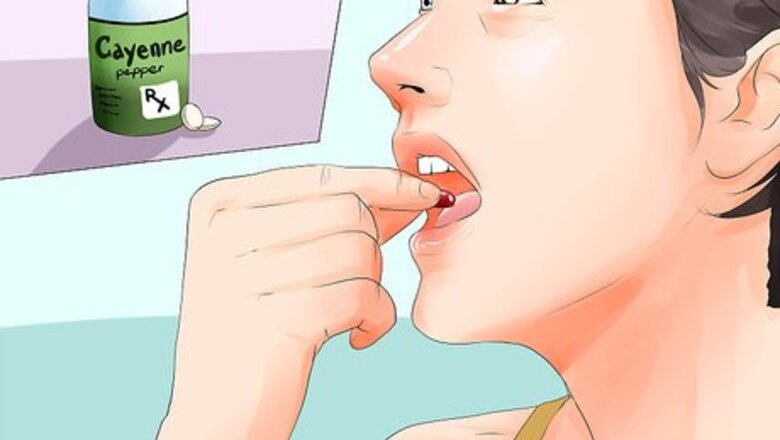
views
X
Research source
If you wish to utilize cayenne pepper to lower your blood pressure, you could add it to your meals, take cayenne capsules, or drink a tasty cayenne tonic.
Taking Cayenne in Concentrated Forms
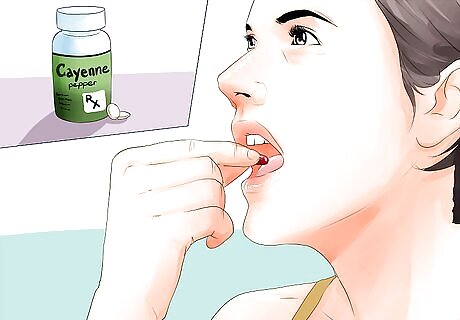
Take cayenne pepper capsules. Cayenne capsules are available at varying levels of concentration. Most supplements offer 400 – 600 milligrams of cayenne per pill. Talk to a trained medical professional to help decide which concentration is right for you, and use the capsules as directed. Cayenne capsules are a good option for people who can’t handle the spicy taste of cayenne peppers or powder.
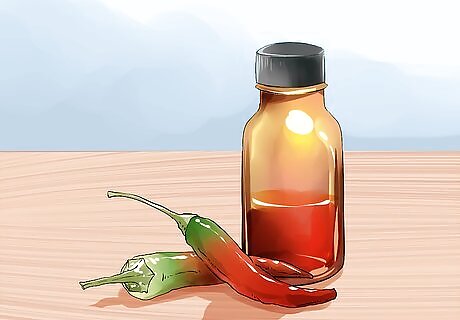
Take a cayenne tincture. A cayenne tincture is a special mixture of cayenne extract plus other ingredients like alcohol, water, coconut, or another natural extract. Shake the tincture bottle well before use. While specific directions for use vary, you can generally take one teaspoon of the tincture three times each day orally. Always use the tincture as directed.
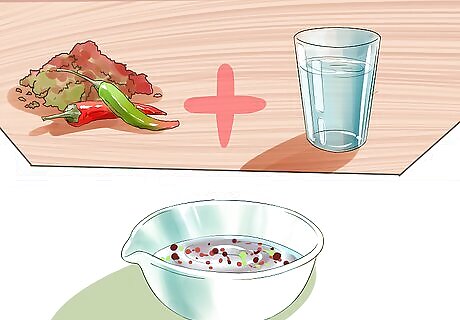
Mix cayenne pepper powder with water. Add one teaspoon of cayenne pepper to half a cup of lukewarm water. Mix the solution with a spoon, fork, or straw. Drink the mixture daily to lower your blood pressure. If you wish to make a bigger batch of cayenne pepper water, you could adjust the proportions. For instance, you could add two teaspoons of cayenne pepper to one cup of water and mix the solution. If you wish to dilute the mixture, you could mix the cayenne pepper with one or two cups of water rather than just half a cup of water.

Mix tomato juice and cayenne powder. Combine eight ounces of low-sodium tomato juice (or any other vegetable juice) with one teaspoon of cayenne. Stir the mixture well. Drink once daily. If you find the whole teaspoon adds too much spice, you could use a half or a quarter teaspoon instead; however, the reduction in your blood pressure might not be as noticeable or happen as quickly. If you wish to increase the impact of this mixture, you could drink it three times each day instead of just once each day.
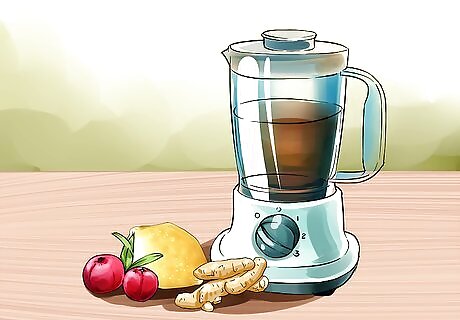
Make a cayenne morning drink. Mix a quarter cup of crushed or diced ginger, a quarter cup of lemon juice, a quarter cup of cranberry juice, one teaspoon of cayenne powder, and 3/4 cup of water. Shake in a closed water bottle with ice cubes or mix in a blender.
Integrating Cayenne Into Your Meals
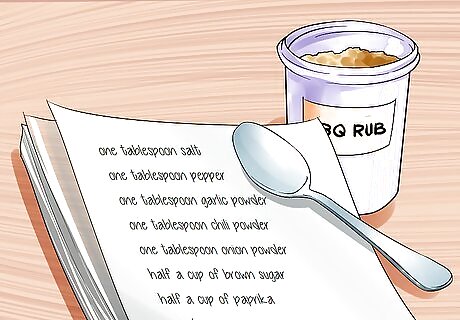
Make a cayenne barbecue rub. A barbecue rub is a great way to lend a bit of heat to your favorite dish. Sprinkle some on your meats, tofu, and fish before dropping it on the barbecue or in the frying pan. The mix can stay fresh in a large ziplock bag or plastic container until it’s time to use it. Simply mix together: 1 tablespoon salt 1 tablespoon pepper 1 tablespoon garlic powder 1 tablespoon chili powder 1 tablespoon onion powder 1/2 cup of brown sugar 1/2 cup of paprika 1 teaspoon cayenne pepper
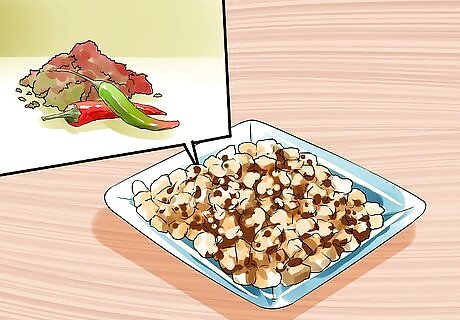
Make baked chickpeas. Baked chickpeas are a great snack, and they only take a few minutes to make. Simply preheat your oven to 428 degrees Fahrenheit (220 degrees Celsius). Place two teaspoons of ghee (clarified butter) in a roasting tray. Place the pan in the oven for one or two minutes. While the pan is heating up, mix 1 teaspoon of dried oregano, 400 grams of chickpeas (drained and rinsed), 1 teaspoon of smoked paprika, 3/4 teaspoon salt, 1/4 teaspoon of cayenne pepper, and 1/2 teaspoon of black pepper in a mixing bowl. Dump the mix in the pan that’s in the oven and give everything a good stir to ensure the chickpeas are evenly coated. Bake for 30 to 35 minutes, shaking the tray every five to 10 minutes to prevent them from sticking to the pan.
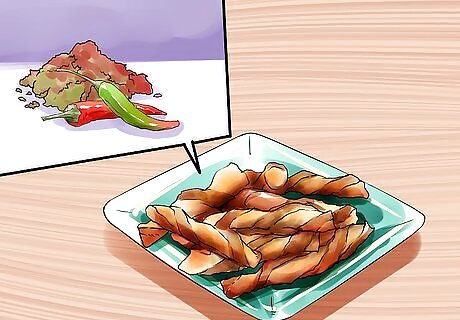
Bake some spicy cheese twists. These cheese twists make a great side with pasta or salad. Preheat your oven to 400 degrees Fahrenheit (204 degrees Celsius). Combine 1.5 cups of grated Parmesan cheese, two teaspoons of paprika, and a quarter teaspoon of cayenne (or more, if you desire) in a bowl. Roll some puff pastry into a rectangle 1/8 inch deep, 12 inches long, and 24 inches wide. Sprinkle the Parmesan mixture over half of the pastry dough. Fold the other half of the puff pastry over so that it covers the Parmesan mixture. You should now have a square 12 inches on each side. Cut the dough in 3/4-inch-wide strips with a sharp knife or pizza cutter. Twist the ends of each strip in opposite directions. Place the strips on a lightly greased pan and brush each with a mixture of 1 tablespoon of water and one egg. Bake for 15 to 18 minutes or until golden brown.
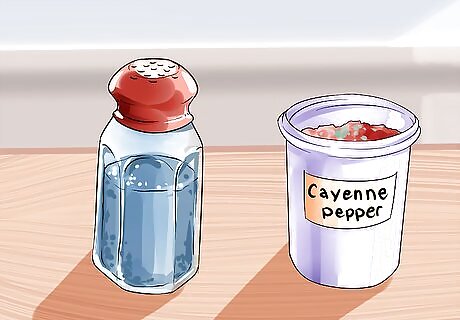
Substitute salt with cayenne pepper. This is a useful substitution for fighting high blood pressure. Not only are you reducing your salt intake (an important step in fighting high blood pressure), but you’re increasing your cayenne intake (which actively lowers blood pressure). With the cayenne on your fries, soups, pasta, and veggies, you won’t even miss salt.
Varying the Frequency You Ingest Cayenne
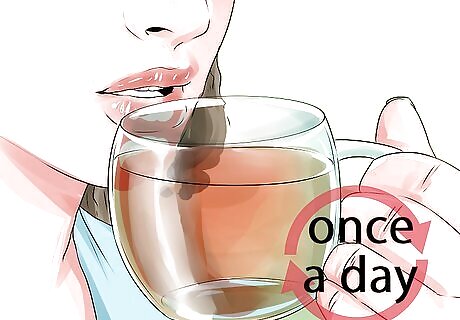
Start out by taking cayenne once per day. Taking cayenne once each day — whether as a tincture or a drink — will help you adjust to its effects gradually. Use about 1/4 or 1/2 teaspoon when starting out. Tinctures, capsules, and cayenne drinks are the most effective way to use cayenne when fighting high blood pressure; however, in addition to getting cayenne in drinks, capsules, and tinctures, you can have a few snacks or meals that incorporate cayenne. Take a measure of your blood pressure before starting your cayenne pepper regimen so that you can track it as time goes on. If you’re using cayenne capsules, you can take anywhere between 30 and 120 milligram capsules three times daily.

Increase your cayenne intake. Move up from 1/4 to 1/2 teaspoon. If you haven’t been taking 1/2 teaspoon already, start taking that amount after one week. If you’ve already been taking 1/2 teaspoon, you’ll want to level up to 3/4 teaspoon. You can take it once daily or divide the amount between several meals or drinks. Measure your blood pressure again at this point to see what kind of progress you’re making. If you aren’t noticing a change, consider adding more cayenne to your diet. For instance, use three-quarters of a teaspoon instead of half a teaspoon.
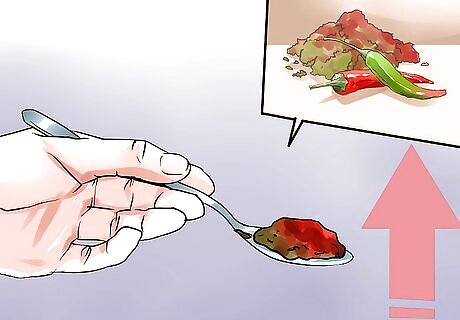
Increase your intake to a full teaspoon. Spread your consumption out over the course of a full day. For instance, assuming you eat three meals per day, use 1/3 teaspoon with each meal. Take another measurement of your blood pressure after using it at this level for a week. If your results are satisfactory, reduce your daily intake slightly. If your blood pressure has not declined to a normal level at this point, continue taking cayenne pepper three times daily until it does. Add more (up to 1 teaspoon, three times a day) if you wish to accelerate the process. Continue to monitor your blood pressure. If it starts ticking back up, add more cayenne to your diet.
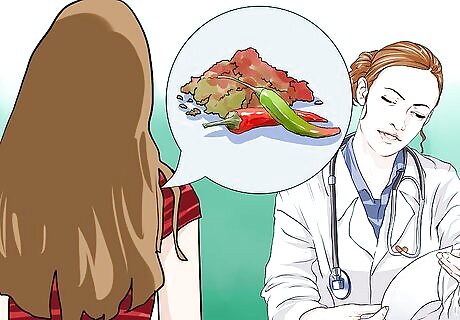
Consult a doctor about taking cayenne. Due to the variability of individual human bodies, it is best to talk to your doctor about whether cayenne can help you lower your blood pressure. The claims behind the healing properties of cayenne might not apply to everyone. Your doctor will help you figure out how much you should take based on your personal medical history and whether you might do better with other medical interventions that could lower blood pressure.


















Comments
0 comment